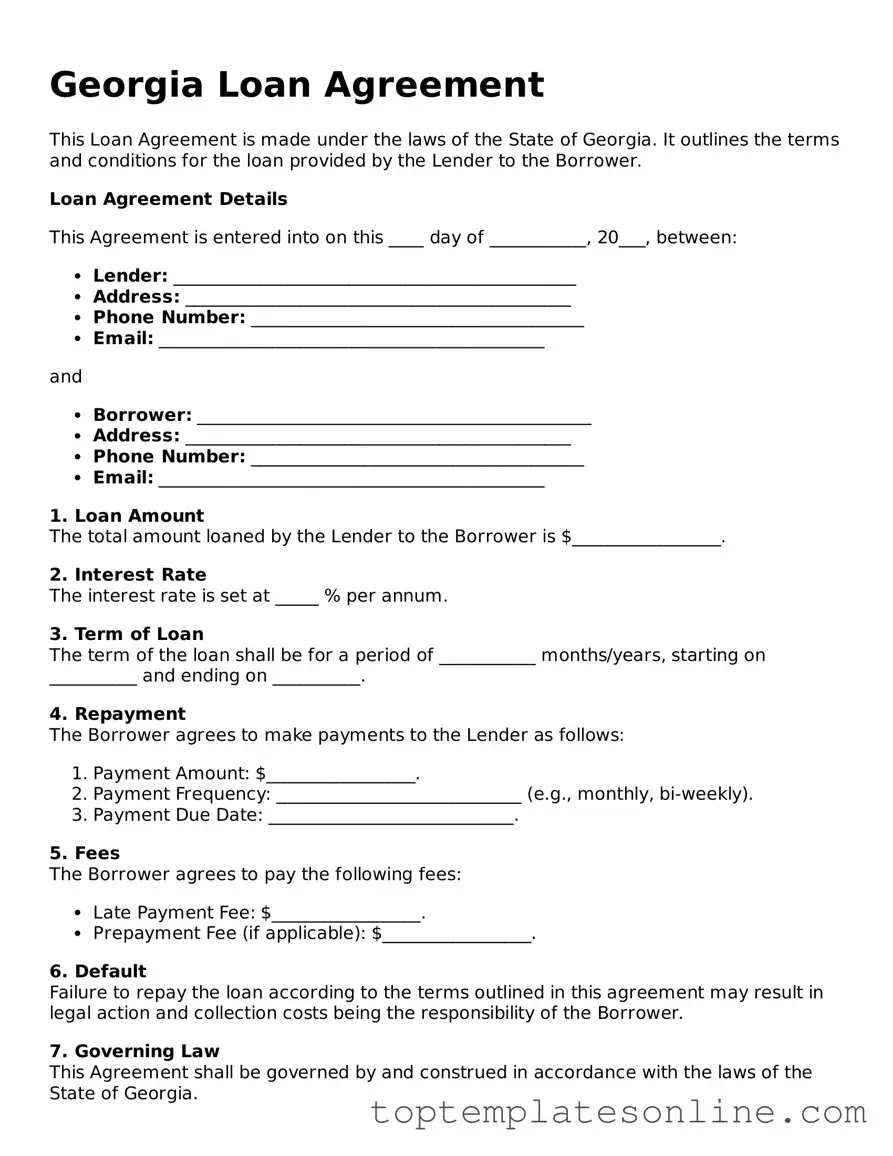Blank Loan Agreement Template for Georgia State
The Georgia Loan Agreement form is a legal document that outlines the terms and conditions of a loan between a lender and a borrower. This form serves to protect both parties by clearly defining the repayment schedule, interest rates, and any collateral involved. Understanding this agreement is essential for ensuring a smooth lending process and avoiding potential disputes.
Customize Loan Agreement Here
